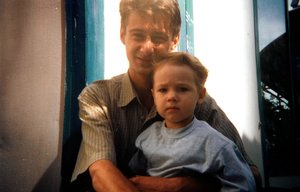It has surfaced in 37 countries. At least 50 percent of those who contract it will die.
By Peter Finn
Washington Post
MOSCOW - A virulent strain of tuberculosis resistant to most available drugs is surfacing around the globe, raising fears of a pandemic that could devastate efforts to contain TB and prove deadly to people with immune-deficiency diseases such as HIV/AIDS.
Known formally as extensively drug-resistant TB, or XDR-TB, the strain has been detected in 37 countries. It arises when the bacterium that causes TB mutates because antibiotics used to combat it are carelessly administered by poorly trained doctors or patients don't take their full course of medication. Rather than being killed by the drugs, the microbe builds up resistance to them.
At least 50 percent of those who contract this strain of TB will die of it, according to medical experts. In trying to stop the spread of the disease, which can be transmitted through coughing, spitting or even speaking, health officials have imposed sometimes extreme controls on infected people.
Robert Daniels, a 27-year-old dual Russian-U.S. citizen, underwent months of treatment for TB in Russia, where he often led a homeless existence. After telling people he was feeling better, he flew from Moscow to New York on Jan. 14 last year, then on to Phoenix.
In fact, his disease had not disappeared. The microbe causing it had mutated, apparently helped by his failure to complete a drug regimen in Russia. Weeks after arriving in Phoenix, Daniels was again coughing, feeling weak and losing weight.
Doctors in Phoenix diagnosed his illness as the new resistant strain of TB. Daniels again failed to follow doctors' orders, authorities say. So health officials got a court order, and he was locked up in the prison wing of a Phoenix hospital.
He has remained there, in hermetically sealed isolation, for nine months.
"It's not right," Daniels said in a telephone interview. "I'm not a criminal."
He has become a case study in the bleak choices society faces in dealing with the new strain and attempting to balance protection of individual rights against protection of the public.
Evidence of TB has been found in ancient skeletons and mummified remains. From the 17th century to the 20th, it was a major killer in the United States and Europe, taking the lives of such notable people as the poet John Keats, the composer Frederic Chopin, the writer Stephen Crane and the actress Vivien Leigh.
Even in the antibiotics age, TB has remained a scourge in poorer countries and communities. Today, one in three people globally is estimated to be infected with dormant TB, according to the World Health Organization.
Most will never get sick, but in one in 10 cases the bacterium becomes active when the host's immune system is compromised. An estimated 1.7 million people worldwide die of the disease every year.
Two events last year alerted the medical community to a frightening new version of the disease. The U.S. Centers for Disease Control and Prevention, drawing on a survey of TB labs on six continents, reported that the prevalence of the super strain of TB increased from 3 percent of patients to 11 percent between 2000 and 2004. It reached 15 percent in South Korea and 19 percent in Latvia.
There are no statistics yet about the new strain in Russia, China or Africa, areas with major TB populations.
In the United States, 13,767 TB cases were recorded in 2006, the lowest rate of infection since reporting began in 1953. A retrospective analysis by the CDC found 49 cases of the new strain in the country since 1993.
The CDC survey was followed by a report from Yale University researchers that the superbug had raged through a rural hospital in South Africa in 2005 and early 2006, killing 52 of 53 who contracted it, including six health-care workers. The victims, apparently infected by airborne transmission of the virus, died on average just 16 days after diagnosis; most of them also had HIV.
"We have to come to grips with this quickly," said Vladislav Yerokhin, director of the Central Tuberculosis Research Institute in Moscow. "This is not just a threat for TB patients. This is a serious threat for the general population."
























No comments:
Post a Comment